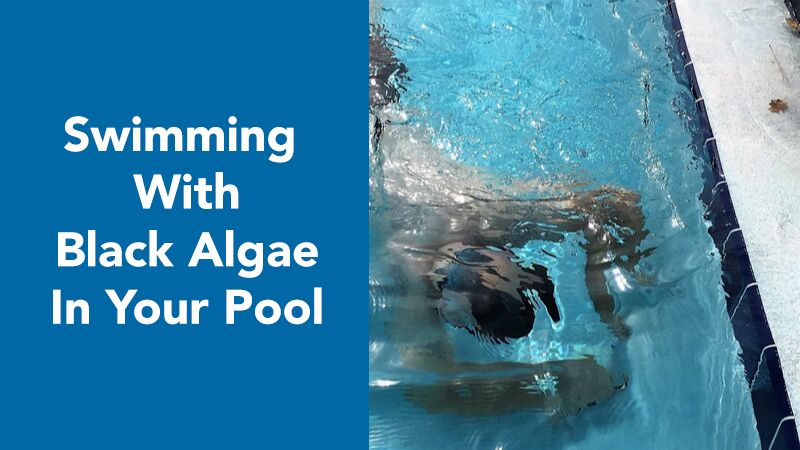If you’re a concerned pool owner who’s worried about algae, you’re not alone. There are more than 21,000 types of algae, typically classified by color, including green, yellow, pink and black. You don’t want to see any of them in your pool!
Where does black algae come from?
All algae can enter your pool a number of ways, but black algae tend to hitchhike on the body or bathing suit of people (or pets) who’ve been recently swimming in a lake or the ocean.
If your pool is properly balanced and filtered, you won’t necessarily get an algae bloom just because these hitchhikers have arrived. The conditions have to be right. In particular, algae love hot sunny days and tend to thrive in that climate, especially in pools with a high PH or low levels of chlorine.
Algae can also flourish if don’t run your filtration system daily, it’s not working correctly, or if your pool’s filter or skimmer basket is clogged and water isn’t circulating properly.
How are black algae in my pool different from other algae?
Like other algae, black algae grow quickly. But black algae can be harder to kill than other types because they develop a protective coating that resists chlorine treatment.
Black algae also sprout deep roots that can grow into concrete or plaster, compounding the difficulty in removing it.
Is it safe to swim with black algae in my pool?
First of all, when black algae bloom in your pool, it isn’t pretty. Not many people will want to swim in it! But, if they do, they won’t get sick from the algae alone.
However, although the black algae itself won’t cause illness, it can attract insects or harbor organisms or harmful bacteria like E. coli, which can make swimmers sick. It’s best to avoid swimming in a pool with black algae until you’ve eradicated it.
How do I prevent or get rid of black algae in my pool?
When you own a pool, regular maintenance is a part of life. Preventive measures like brushing and vacuuming your pool, maintaining proper pool chemistry with balanced chemicals, and shocking your pool weekly help keep it clean.
Sanitizing your pool tools and toys is important, as is making sure you keep your filter in working order and run it regularly.
In addition, it’s a good idea to make sure no one enters the pool without first washing their bathing suit (and themselves). That includes your pup—after a swim in the lake or ocean, he should have a bath before he jumps in the pool.
Bring in a water sample to any of our 5 locations and we’ll determine whether you have black algae in your pool and what products you need to help you remove it. We’ll also help you understand how to prevent black algae from returning so you, your family, and friends can swim happily all season long!


